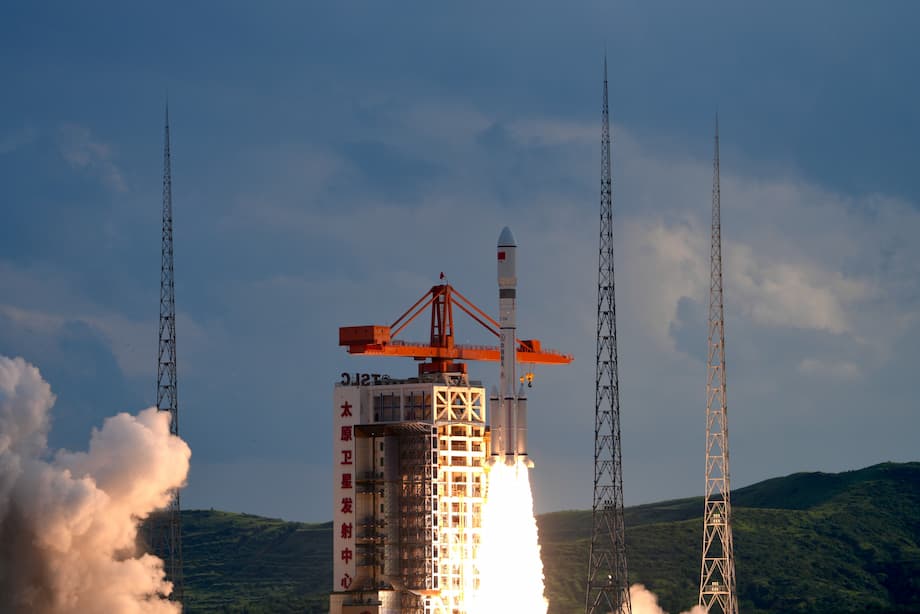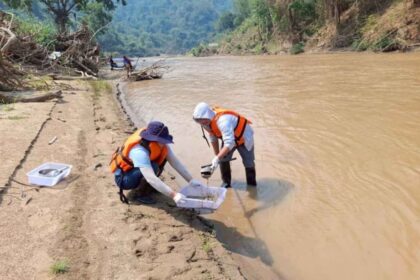China’s Guowang Megaconstellation: A New Era in Military and Space Competition
China’s ambitious Guowang satellite megaconstellation is rapidly taking shape, signaling a dramatic shift in the global balance of power in space. With plans to deploy nearly 13,000 satellites in low Earth orbit (LEO), China is not only seeking to rival SpaceX’s Starlink network but also to secure a decisive military and strategic edge. The project, managed by the state-owned China SatNet, has triggered alarm among US defense officials and space experts, who see Guowang as a potential game-changer in both communications and military operations.
- China’s Guowang Megaconstellation: A New Era in Military and Space Competition
- What Is the Guowang Megaconstellation?
- Military Implications: A New Space Race
- Strategic Motivations and Geopolitical Context
- Challenges: Technical, Logistical, and Environmental
- Secrecy, Transparency, and International Reactions
- Comparisons with Starlink and the Global Megaconstellation Race
- Broader Implications: Security, Sovereignty, and Sustainability
- In Summary
What Is the Guowang Megaconstellation?
Guowang, meaning “national network,” is China’s answer to the growing dominance of Western satellite internet constellations. Officially launched in 2021 with the creation of China SatNet, the project aims to provide global broadband coverage, enhance national data security, and support both civilian and military users. The constellation is designed to operate at various orbital altitudes, with satellites equipped for broadband communications, laser data links, synthetic aperture radar, and advanced optical sensors.
Unlike SpaceX’s Starlink, which is built and launched by a single company, Guowang satellites are manufactured by a consortium of state-owned and private Chinese firms and launched on a variety of rockets, including the Long March 5B, 6A, and 8A. This diversified approach is intended to accelerate deployment and build resilience into the network.
Scale and Ambition
The scale of Guowang is staggering. China has filed with the International Telecommunications Union (ITU) to deploy 12,992 satellites, slightly more than Starlink’s authorized total. Each launch typically carries eight to ten large satellites, and as of mid-2025, China has completed at least eight launches, with the pace accelerating in recent months. The ultimate goal is to achieve global coverage and establish a robust, secure communications backbone for China and its allies.
Military Implications: A New Space Race
US defense officials are increasingly concerned that Guowang could provide the Chinese military with capabilities similar to those the US enjoys through Starlink and classified military constellations. The integration of advanced payloads—such as laser communications and radar imaging—means Guowang could serve as the backbone for a “kill web,” a networked system capable of detecting, tracking, and targeting adversaries in real time.
Guowang’s architecture resembles not just Starlink, but also the US military’s Starshield and the Space Development Agency’s planned missile-tracking satellites. The network’s resilience and global reach make it difficult to degrade or disrupt, posing a significant challenge for US and allied forces in any future conflict, especially in the Western Pacific.
US defense analysts warn, “Guowang could give China a head start in building a space-based kill chain for targeting and striking adversaries.”
China’s rapid progress has prompted calls within the US military for the development of counter-space capabilities, including electronic warfare and anti-satellite weapons, to deny China the use of such networks in a crisis.
Strategic Motivations and Geopolitical Context
China’s push into LEO megaconstellations is part of a broader strategy to achieve digital sovereignty, technological self-sufficiency, and global influence. The Guowang project is closely tied to national security objectives, ensuring that China’s military and critical infrastructure are not dependent on foreign-controlled networks. It also supports the “Digital Silk Road,” extending Chinese connectivity and influence to developing countries and strategic partners.
Guowang is not China’s only megaconstellation. Projects like Qianfan (“Thousand Sails”) and Hongyan are also in development, with similar ambitions. The proliferation of these networks reflects China’s determination to dominate the next frontier of great power competition: low Earth orbit.
Economic and Commercial Drivers
Beyond military applications, Guowang is expected to drive economic growth by providing high-speed internet to underserved regions, supporting smart cities, autonomous vehicles, and the burgeoning Internet of Things (IoT). The constellation’s advanced technologies—such as phased-array antennas and inter-satellite laser links—mirror those of Starlink, aiming to deliver low-latency, high-capacity broadband on a global scale.
China’s state-backed aerospace giants, including the China Aerospace Science and Technology Corporation (CASC), are ramping up satellite production and developing reusable rockets to support the high launch cadence required. Local governments are investing in new space industry parks and launch centers, further accelerating progress.
Challenges: Technical, Logistical, and Environmental
Despite its rapid progress, Guowang faces significant hurdles. The sheer scale of the project requires a sustained increase in launch rates, streamlined ground infrastructure, and robust satellite management systems. Each launch currently carries fewer satellites than Starlink missions, partly because Guowang satellites are larger and more complex. To meet its ambitious timelines, China must ramp up rocket production and possibly introduce new, higher-frequency launch vehicles.
Orbital Congestion and Space Debris
One of the most pressing concerns is the risk of orbital congestion and space debris. Each Guowang launch leaves spent rocket stages in orbits where they can persist for decades, increasing the risk of collisions. China has faced international criticism for uncontrolled rocket reentries and a lack of transparency regarding debris mitigation. While some newer rockets can deorbit themselves, many older models still leave debris in high orbits, raising the specter of the so-called “Kessler Syndrome”—a cascade of collisions that could render parts of LEO unusable.
Space sustainability experts warn, “The growing number of satellites and debris increases the risk of Kessler Syndrome, where collisions create a cascade of further debris.”
This is not a problem unique to China. SpaceX’s Starlink and other megaconstellations also contribute to orbital congestion, complicating scientific observations and increasing the risk of accidents. Experts stress the need for international cooperation and stronger regulation to ensure the long-term sustainability of Earth’s orbital environment.
Secrecy, Transparency, and International Reactions
China’s handling of Guowang has been marked by secrecy. Official announcements often omit key details about payloads, objectives, and launch schedules. This opacity has fueled suspicion among international observers, who worry that the true scope and capabilities of Guowang may extend far beyond civilian broadband.
The US and its allies are watching closely, with some officials calling for greater investment in counter-space technologies and more robust space situational awareness. The global space community is also urging China to adopt best practices for debris mitigation and to share trajectory information more transparently.
One Western space policy analyst noted, “Transparency is a major issue, with China often criticized for not sharing trajectory information and for not adhering to international best practices.”
Meanwhile, China frames Guowang as a peaceful, developmental project aimed at bridging the digital divide and supporting global connectivity. State media emphasize the benefits for rural communities, disaster response, and economic modernization, while downplaying military applications.
Comparisons with Starlink and the Global Megaconstellation Race
Guowang is often described as China’s answer to Starlink, but there are important differences. Starlink, operated by SpaceX, has already deployed over 8,000 satellites and serves millions of users worldwide. Its rapid deployment, high launch frequency, and advanced technology have set the standard for LEO broadband networks.
Guowang, by contrast, is still in the early stages, with fewer satellites launched per mission and a slower overall pace. However, China’s state-driven approach, massive industrial base, and focus on both civilian and military applications could allow it to catch up quickly. The project’s integration with national security objectives and the Digital Silk Road gives it a unique strategic dimension.
The Broader Megaconstellation Landscape
China is not alone in pursuing LEO megaconstellations. Amazon’s Project Kuiper and other initiatives are also vying for a share of the global satellite internet market. The result is an increasingly crowded and competitive orbital environment, with profound implications for communications, security, and space governance.
Broader Implications: Security, Sovereignty, and Sustainability
The rise of megaconstellations like Guowang is reshaping the strategic landscape in space. Control of LEO is now seen as vital to national security, economic growth, and technological leadership. The ability to provide secure, resilient communications and real-time intelligence from space could determine the outcome of future conflicts and the balance of power among nations.
At the same time, the proliferation of satellites and debris poses new risks for all spacefaring nations. Without effective regulation and international cooperation, the sustainability of Earth’s orbital environment is in jeopardy. The Guowang project, while a testament to China’s technological ambition, underscores the urgent need for global norms and best practices in space operations.
In Summary
- China’s Guowang megaconstellation aims to deploy nearly 13,000 satellites, rivaling SpaceX’s Starlink and reshaping the global space race.
- The project is driven by both commercial and military objectives, with advanced technologies for broadband, surveillance, and secure communications.
- US defense officials are concerned that Guowang could give China a strategic military edge, prompting calls for counter-space capabilities.
- Rapid deployment faces technical, logistical, and environmental challenges, including orbital congestion and space debris risks.
- Secrecy and lack of transparency around Guowang’s operations have fueled international suspicion and calls for stronger space governance.
- The megaconstellation race highlights the need for international cooperation to ensure the sustainability and security of Earth’s orbital environment.












